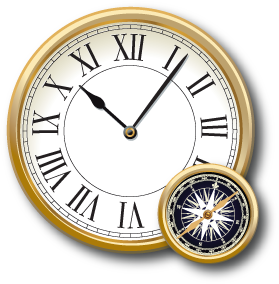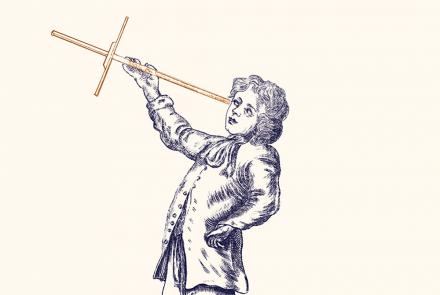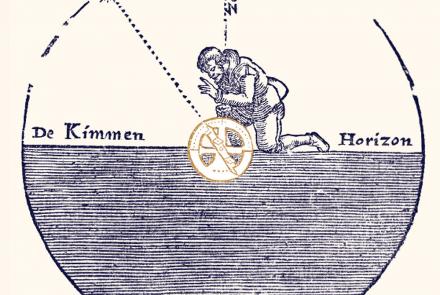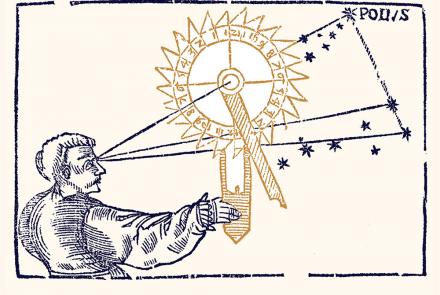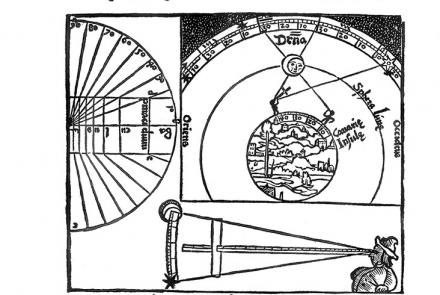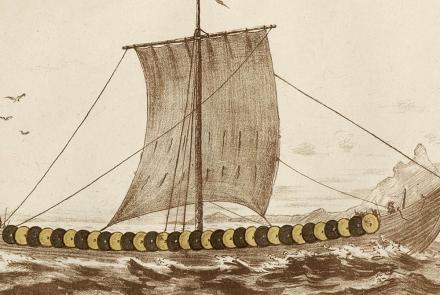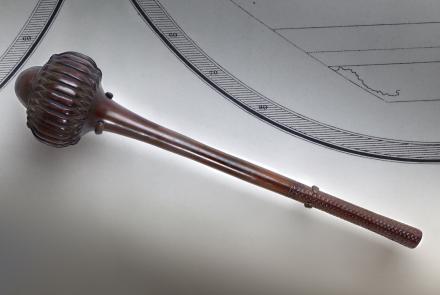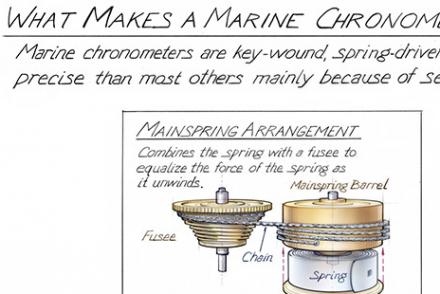Multimedia Gallery
- Topic: Navigating At Sea
A mariner could use a cross staff to measure the Sun’s angle above the horizon at midday.
A lead line could measure water depth and bring up a sample of the bottom.
Using a mariner's astrolabe to measure the angle of the Sun or a star above the horizontal.
A nocturnal is used to find the local time at night by observation of stars near the North Pole.
Sandglasses of different sizes and durations could measure intervals of time for ship speed and periods of duty.
Using an horary quadrant to find time of day by measuring the Sun's altitude.
Astronomers had long known that the Moon changes its position against the background of the sky and stars fairly quickly. This steady motion could be used to measure time.
Viking ship discovered in a burial mound at Gokstad, Norway.
This war club was collected by the U.S. Exploring Expedition in Fiji.
Marine chronometers are key-wound, spring-driven timekeepers that are more precise than most others mainly because of several special features.


